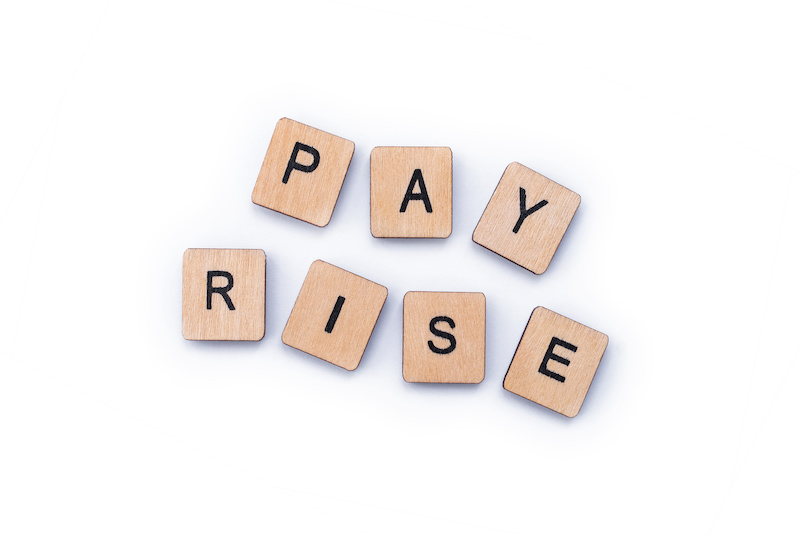Over the years, I’ve heard many arguments as to why some GP practices claim not to be able to afford an annual cost-of-living pay rise for their hard-working and supportive staff. You’ve probably heard the ‘excuses’ yourself – at least, let’s call them that for the time being. You may agree with them, but on the other hand, you might question them. They include:
“We’ve never been given enough in our global sum…”
“Our global sum has reduced…”
“We’re waiting to receive the uplift…”
“Our list size is falling…”
“It’s expensive to employ locums…”
“We (the doctors) haven’t had a pay rise for years…”
It’s quite clear that the vast majority (c.75%) of practices don’t use the NHS pay scales and that last year, 2020, in the midst of the Covid pandemic, it appears that some 40% of practices didn’t award their staff an annual cost-of-living increase (source: Pay Rise Poll, Practice Index).
Pay negotiations – the process and the choices
When I worked on the administration side of family practitioner services, I was an active trade union member. At one point, I was president of a national trade union, and I heard for myself the arguments that were put forward each year to negotiate a pay increase for staff. There were presentations about the level of inflation, this index and that index. Costing a pay rise was no easy business. Any pay rise would involve additional expenses for the employer in terms of employer’s National Insurance and NHS Pension contributions. It all needed to be factored into the cost of a pay rise by the employer. It wasn’t unusual each year for the trade unions to request improvements in, for instance, annual leave entitlements, but the choice was quite simply: do you want an extra day’s leave, membership of the NHS Pension Scheme and more sick pay or a higher percentage pay rise? And, yes, you’ve guessed it; usually a better pay rise won.
Pay differentials narrow
The introduction of the National Minimum and, more recently, the National Living Wage has forced employers to give fixed pay rises to lower-paid staff anyway. This April (2021), it’s a 2.2% increase amounting to 19p per hour. This met with the recommendations from the Low Pay Unit and reflects the Consumer Price Index too! It’s difficult to understand why then NHS staff have only been offered 1%. But one problem with fixed statutory pay increases is whether the same increase is reflected in pay awards given to the rest of the employees; consequently, if it isn’t, the gap between the low paid and higher paid just continues to narrow. One recent example I found was of a practice employing apprentices on the maximum living wage, not taking account of their age or the National Living Wage’s apprentice rate. This meant that other staff in the practice who were receiving the National Living Wage were on the same hourly rate as the apprentices they were training. There are also significant variations in pay level from practice to practice and, recently, discussions about ‘what do I pay my deputy?’.
Worrying and not so worrying trends
Whilst you might not agree with me, I find some trends that have occurred in recent years in relation to staff terms and conditions quite worrying. These include setting leave entitlement at the required statutory 28 days but including 8 bank holidays in that sum. It is, of course, perfectly legal. But I can’t understand why, for instance, an employer might allow, say, 25 days’ leave plus bank holidays (making the entitlement pass the 28-day mark). Then there’s Employers’ Sick Pay – or is there? There does appear to be a trend to pay new staff only Statutory Sick Pay (possibly as many as 22% of GP employers). For the employer, it’s a saving, but for the employee it might be a different matter altogether. On the opposite side of the coin, I can applaud those employers who add extra days’ leave entitlement for, say, Christmas shopping, perfect attendance, a religious day, and a new one on me – birthdays. For someone on the National Living Wage, an extra day’s leave might cost around £67 without employers’ costs, whereas a 2.2% increase in pay might cost in excess of £372 per annum. It all adds up.
Choices to be made
So, in the run-up to pay day in April 2021, no doubt many practice managers will be pondering or trying to respond to the question ‘will we get a pay rise?’. If your employer is going to say no, you need to have ready a very sound explanation for your staff as to why not. If your employer is going to say yes, you may still need to have a very sound explanation for your staff about the percentage increase that’s being given. These are very difficult times; most employees are still waiting for their vaccines. Those moving towards their retirement may well be thinking very hard about whether to throw in the towel. My State Pension increase is 2.5% (Retail Price Index) in April this year. My NHS Pension uses the Consumer Price Index and I expect a 1% increase but there was a year recently when there was no increase. I’m on tenterhooks about what might be £13 per month after tax! Will I be able to afford or even go on a holiday?
I wish you success in your pleas for a cost-of-living increase, particularly as the Government’s offer is causing such a reaction. State your case to your employer and cross your fingers.
Robert Campbell





0 Comments